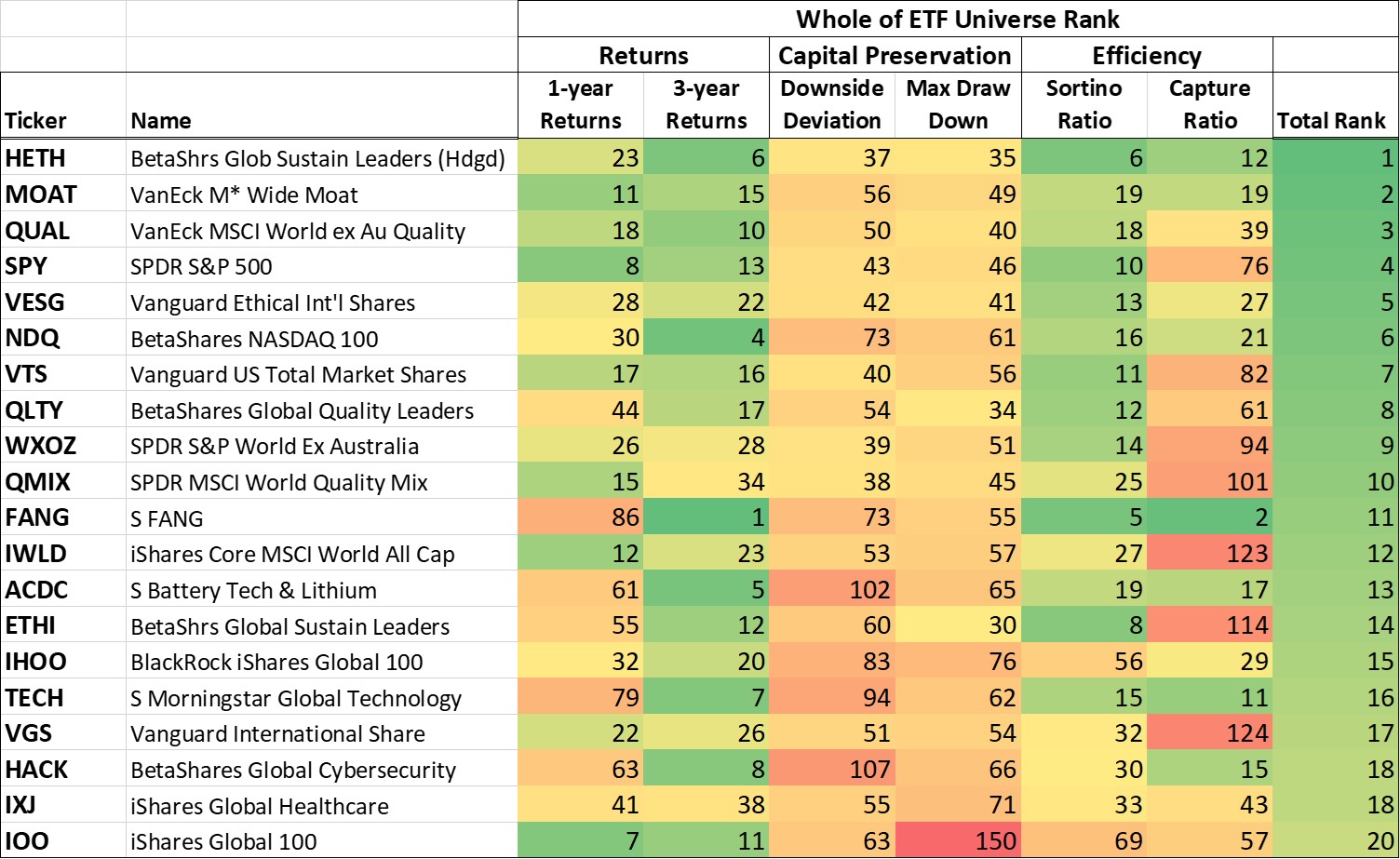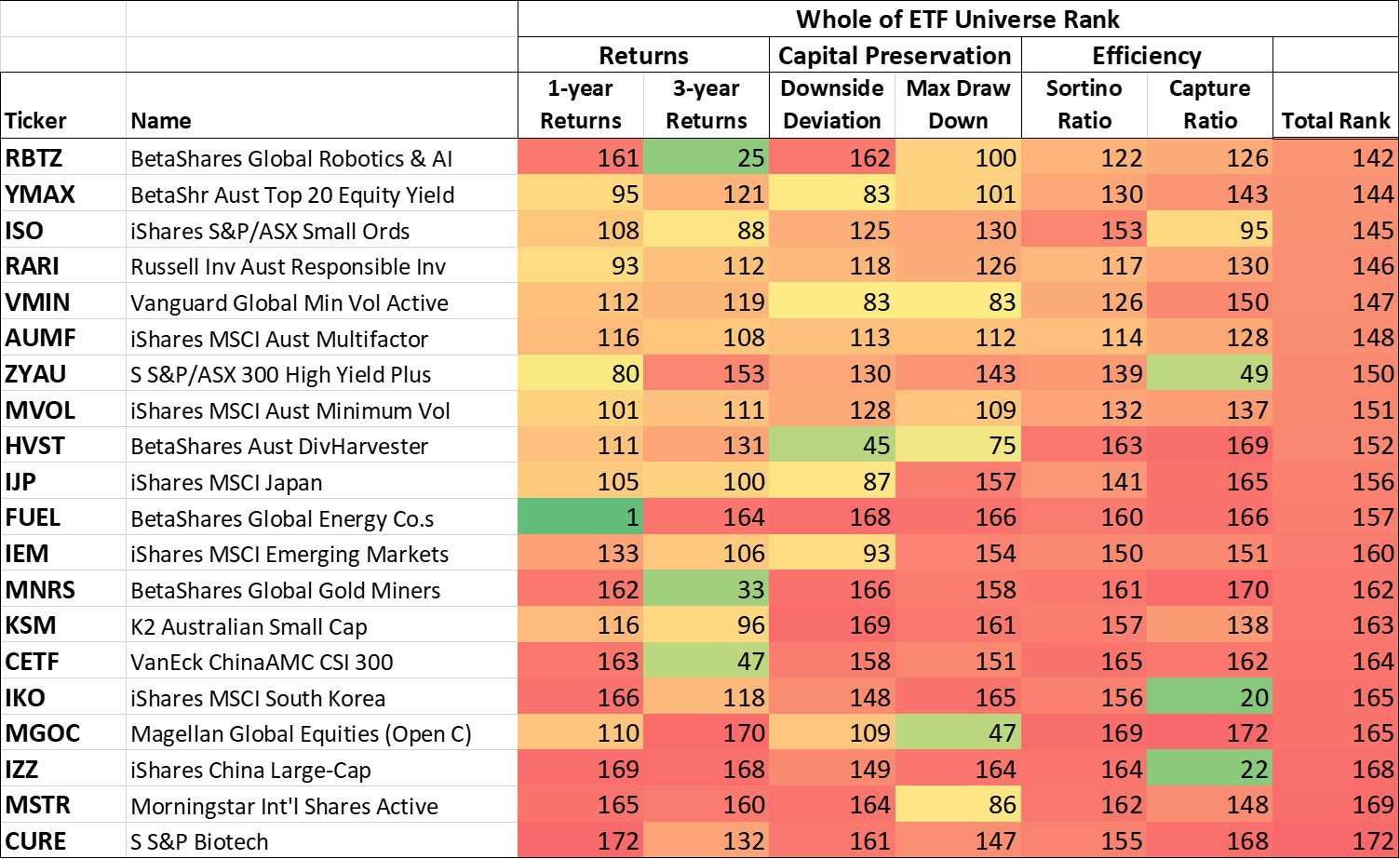The 20 best and worst ETFs: A quarterly performance review

Risk Return Metrics
In this publication of the ETF Monthly we provide an update the sector specific and total ETF / ETMF performance rankings (which we do on a quarterly basis) based on our coverage universe, currently 180 vehicles (minimum 12-month track record eligibility criteria).
The performance rankings analysis is based on a relatively simple methodology:
- 50% weighting to returns (1-year and 3-year, or since inception where there is not a 3-year track-record)
- 25% to risk / capital preservation (downside deviation and maximum drawdown)
- 25% to efficiency (sortino and capture ratios).
Active ETFs – A Tale of Joy and Woe
What the rankings highlight in addition to a separate 12-month review of the key Active ETF (ETMF) segments of Global Equities and Fixed Income is the former has struggled significantly versus its passive index tracking cheap Beta peers while the latter has exceled (and which we would expect it continue to do so).
It has been a horror 12-months for active ETF managers in the global equities space and we conclude this is largely due to style concentration risk in this particular segment. And that style risk is to large / mega-cap growth oriented equities with a U.S. and Tech sector concentration.
In regards to this style risk, and to paraphrase Emmanuel Macron, we do not suspect, we know. We know this style risk exists both from a qualitative and a quantitative assessment, as the report details.
If we were to draw one broad key universal conclusion from this Active ETF analysis and dichotomous performance, it is active (versus passive) strategies are best suited to markets / asset classes with the highest inefficiencies / information advantage. In the listed markets, no asset class has greater inefficiencies / potential for information advantage than fixed income. In equities, the inefficiencies / potential for information advantage is materially higher in the small to mid-cap segments (versus large / mega-caps) and is also relatively high in the enhanced equity income and emerging markets segments.
Top 20 Best Performers (*Green good, Yellow average, Red bad)

Bottom 20 Performers

Download the PDF to access the full ETF Monthly report
Click on the pdf below to access:
- New ETF Product Issuance;
- Quarterly and Last Month FUM flows;
- ETF Sector and Total Market Rankings and Analysis;
- Performance Table Summaries;
- 180 ETF / ETMF Profiles (all Hyperlinked from P2-3).

Investment analyst with particular experience in listed and unlisted investment strategies, equities and structured products.
Expertise

Investment analyst with particular experience in listed and unlisted investment strategies, equities and structured products.
